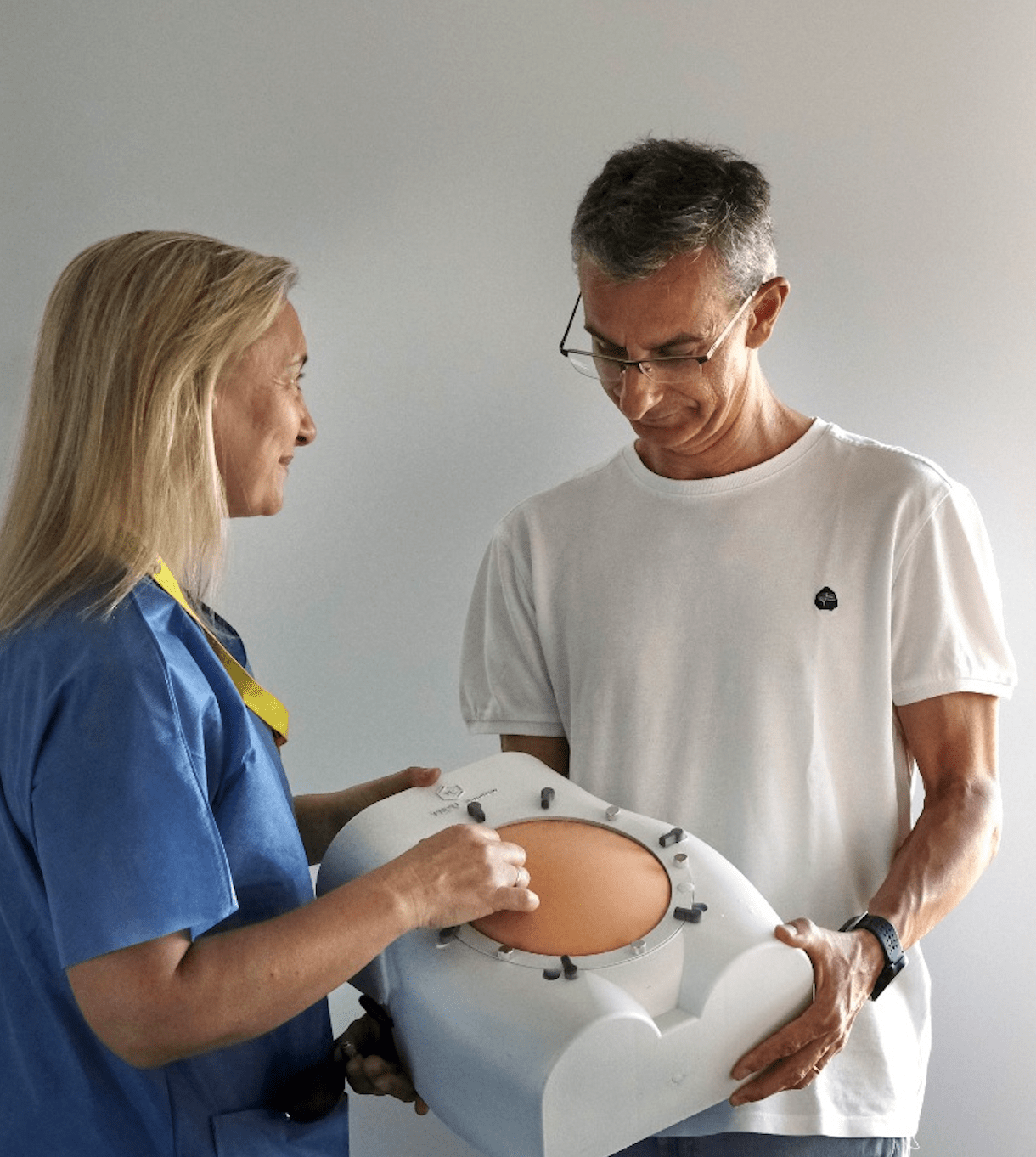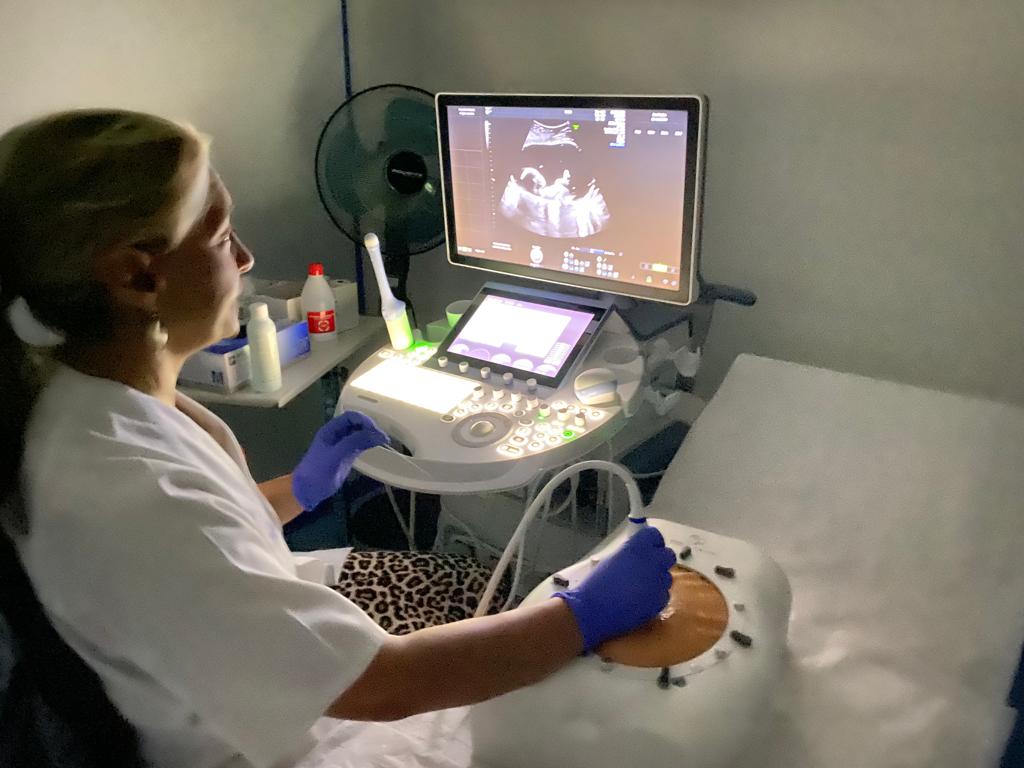From the idea of an obstetrics simulator for training in invasive techniques to its realization: the TECU simulator through the words of its developers.
Clinical simulation in Obstetrics is not something new. As early as the 18th century, Madame Du Coudray devised the first manikins to teach “the art of childbirth” to midwives in Paris and elsewhere in France. Since then, simulation in Obstetrics has focused on the different situations that can be complicated at the time of delivery, from eutocic delivery to breech delivery or shoulder dystocia.
Since then, Obstetrics as a specialty has changed radically: ultrasound has become essential and ultrasound-guided diagnostic techniques (amniocentesis and chorionic villus biopsy) are common procedures today.
Until now, amniocentesis was performed practically exclusively in Prenatal Diagnosis consultations and was learned by performing it directly on the patient, under the supervision of an assistant. However, there are two factors that make simulation even more necessary in this area: the decrease in the number of invasive tests in Prenatal Diagnosis thanks to the improvement of screening tests and the new indications that have emerged regarding the early diagnosis of subclinical chorioamnionitis,that make it necessary for any gynecologist on duty to be trained to perform an emergency amniocentesis.

The idea of creating TECU Simulator as an amniocentesis and CVB simulator arose from the need to provide training in invasive techniques to residents of Obstetrics and Gynecology at the Hospital Clínico Universitario de Salamanca. It is true that the improvement in screening techniques reduces the number of invasive techniques, which is very good for patients, but it is also true that the reduction in the number of invasive techniques also decreases the training level and skill of those who have to perform them, especially those professionals that must acquire them as part of their specialty. On the other hand, it does not seem prudent to learn a technique that carries possible risks for the pregnancy directly with the patient.
This concern was not unique to us, of course: many other professionals had the same perception. In 2016 we attended a course at the Torrejón Hospital (Madrid). In it, Dr. Belén Santacruz taught us how to create very basic amniocentesis simulation scenarios using animal samples.. In 2018 we launched our first simulation course using this model in the Obstetrics and Gynecology Department. The course turned out very well, and the model was very realistic, since animal tissue perfectly simulates human tissue, but it was very uncomfortable to handle. From there we began to devise ways to do something similar but more manageable and clean, and we implemented the model creating the first prototype, which was the basis of the current one. This prototype used animal samples (turkey breast), but the sample was leak-tight, did not give off odors or liquid, and allowed a one-morning simulation session to be completed without being changed. With this model we did the second simulation course in Salamanca, in 2019, and the results were very good. At that time we decided to patent the idea, since then there was nothing similar on the market. We started the patent procedures, we registered the utility model and the TECU Simulator brand in 2020, we designed our website (which includes a free downloadable learning resource) that we have been implementing with each new contribution and we started the path for the industrial design, with a view to its future commercialization.

However, in 2020, the arrival of the COVID pandemic was a significant brake on development, which was paralyzed until 2021. In that year we finished the last adjustments to the container, but we still had to finalize two important things: the content of the amniotic sac and a membrane that imitated the abdomen of the pregnant woman and replaced the animal sample, preserving the necessary echogenicity properties. We have achieved the first through collaboration with Luis Orantes, from the company Factoría de Patologías: Luis has designed two fetuses for us in an echogenic material that mimic a gestation of 12 and 15 weeks, respectively, which make the simulation environment more realistic. The second, fundamental for the implementation of an efficient and useful model in daily practice, we have achieved through collaboration with Jacinto Salas Cortés, from the company BIOTME.
The material he has designed perfectly simulates the abdominal tissue of the pregnant patient, so that learning how to guide the puncture needle with the help of the ultrasound probe becomes as real an experience as when it is performed with an animal sample or with the patient herself, but with the advantage of not having to prepare the sample in advance,. that is, a simulation session can be improvised in the consultation itself, because everything necessary is included in the simulator. All you need is an ultrasound machine and time available to simulate.

When one is immersed in this process, sometimes doubts arise as to whether we are going on the right path. In 2022, resuming the trajectory interrupted by the pandemic, the Spanish Patent and Trademark Office nominated us for the Best Invention Protected by Intellectual Property Awards. We were finalists, and this has been a great reinforcement when it comes to thinking that we are heading in the right direction.
TECU Simulator will be available for commercialization in October 2022. We hope that it can make a positive contribution to the training of doctors and the safety of patients and their pregnancy.
Other authors: Jose Carlos Tejedor Lorenzo





























